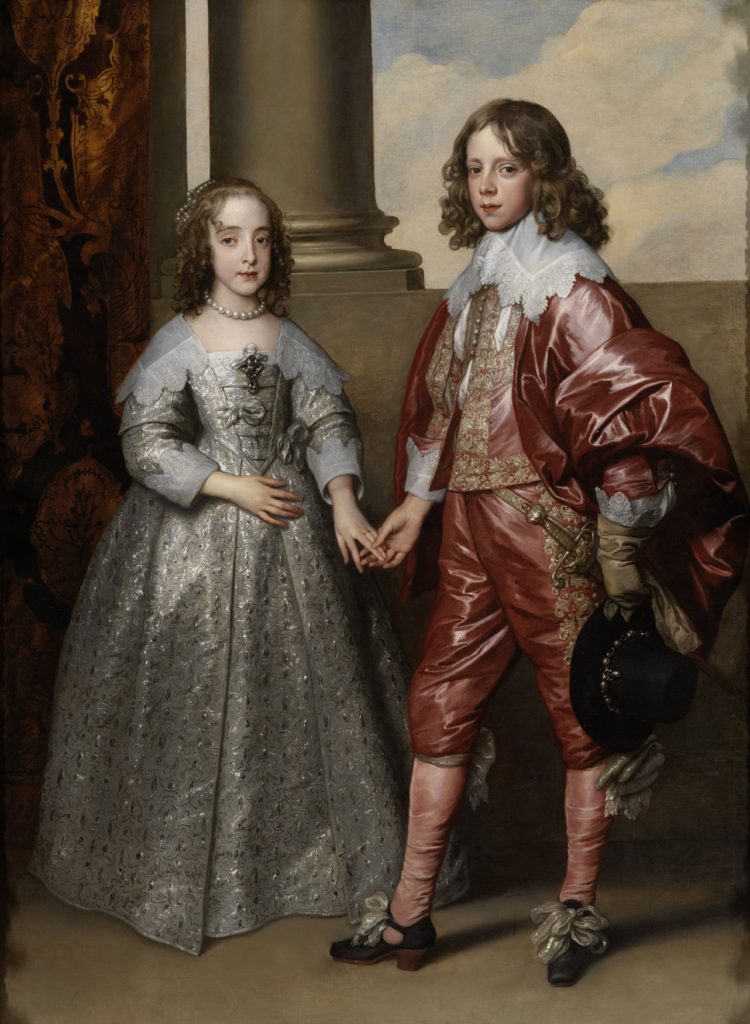
William II, Prince of Orange, and his Bride, Mary Stuart, by Anthony van Dyck, 1641. Rijksmuseum, Amsterdam.
The bride shown here is only 9 years old. Her name is Mary Stuart.
Born in November of 1631, Mary was the eldest daughter of King Charles I of England, Scotland, and Ireland and his wife, Henrietta Maria of France. At the age of 9, she married William II, Prince of Orange and Stadtholder of the United Provinces. Mary and her mother moved to the Dutch Republic, where she was taught the ways of Dutch court. It’s clear that Mary and Charles did not have a sexual relationship until late in their marriage. Just before William’s death in 1650, they had an infant son. Mary shared guardianship of the boy with her mother-in-law and uncle-in-law. However, Mary was not well liked by the Dutch, and eventually was banned from receiving her relatives. She returned to England after the restoration of Charles II, and died of smallpox at the age of 29.
While this image is meant to be celebratory, it is also quite horrifying. Mary is, after all, only 9 years old – still a child in many ways.
Today, we’d be appalled.
During this time, however, child marriage – especially among royals – was thought of differently. Their marriage would not be consummated for many years, because society recognized that they were not yet ready for an adult relationship. In Mary’s home country of England, the legal age for marriage was 12 for women and 14 for men, though they could be engaged as early as 7. Yet such marriages were rare – and typically only occurred for royalty to secure political alliances. The average age of most people at marriage was 25.
Medieval society understood that child marriage was necessary for politics –but that the children should refrain from their adult obligations until they had matured.
Today, it’s quite different. Child marriage still exists – but it’s often a way for parents to get rid of the economic burden of daughters, rather than secure political alliances. Yet unlike Mary’s time, child marriage today is very dangerous. There are no protections – like societal norms – that keep the marriage from being consummated. This exposes young girls to many risks: the mental anguish of being forced into sexual relationships too young; early pregnancy; contracting disease; becoming subject to domestic violence; and death. Unlike Mary, who had very limited career prospects due to the social norms of her time, girls married young today lose out on an education and their career potential – often perpetuating a cycle of poverty.
When we look at this image of Mary and Charles, we see children as a married couple. But this image, and it’s story, show us that we can’t just say child marriage is okay because it has always existed. Child marriage of the past was vastly different from today – and the royals who were married young were often protected from the more grown-up parts of life for a while. Girls today are not.
-Tiffany Rhoades
Program Developer
Girl Museum Inc.
This post is part of our 52 Objects in the History of Girlhood exhibition. Each week during 2017, we explore a historical object and its relation to girls’ history. Stay tuned to discover the incredible history of girls, and be sure to visit the complete exhibition to discover the integral role girls have played since the dawn of time.
